#Willy lotts cottage
Text
#photography#landscape#landscape photography#Nature#Photographer#Product#Event#Suffolk#Willy lotts cottage#The scallop#Aldeburgh#Snape#Snape malting#Sheffield#Suffolk photographer#Suffolk photography#Å drømme#Pretty#Fernwehh#Misty#autumn#autumnal#aesthetic#nature#music#natur#glow
0 notes
Text

oil on canvas 16 inch x 12 inch
Prints for sale > https://www.etsy.com/uk/shop/MrsCTLandscapes
#mrsctlandscapes#landscape painting#oilpainting#landscape#oil on canvas#oil painting#realism#willy lott's cottage
3 notes
·
View notes
Text

"willy lott's cottage flatford mill east bergholt dedham spring; essex; england; uk..." :)
3 notes
·
View notes
Text
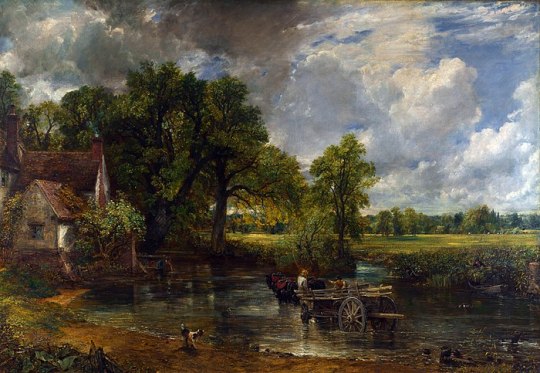
006. "The Hay Wain" by John Constable (1821)
The Hay Wain by John Constable was originally named Landscape: Noon. It shows a rural scene on the River Stour between the English counties of Suffolk and Essex. It currently lives at the eNation Gallery in London. This oil on canvas painting shows three horses pulling wood (better known as a wain) across the river. On the far left is Willy Lott's Cottage, which you can visit and stay the night in.
The Hay Wain is a series of paintings by Constable called the "six-footers," which he painted for the annual summer exhibitions at the Royal Acadamy. Flatford mill was owned by constables father and the house on the left belonged to a neighbor, Willy Lott who was said to have been born in the house and never left it for more than four days in his entire life. Though none of the originally trees in the painting still stand the Lott’s cottage survives practically unharmed.
What I really enjoy about this painting is the way the background, specifically the sky, is curated. I love how Constable paints the clouds in particular and how you can see a storm approaching with the darker clouds circulating to the foreground. I also really love how the water is painted and how it reflects the surrounding ambiance. In my own work I want to use more color and I really appreciate the blues and the different shades of green used so effortlessly. Overall I hope to explore more color palettes in my own work.
0 notes
Video
Willy Lott's House NT Suffolk by Adam Swaine
Via Flickr:
Originally part of Gibbeon’s Gate Farm, Willy Lott's House is a Grade 1, listed building. Willy Lott (1761-1849) was a tenant farmer who worked the 39 acres around Flatford that made up Gibbeon's Gate Farm. He lived in a house attached to the farmland, which long after his death, became known as Willy Lott's House. Willy Lott's parents lived in this house, Willy and his sisters and brothers were born there
#flatford mill#cottage#cottage garden#english cottage#willy lotts cottage#suffolk#National Trust#nature lovers#nature#Gardens#england#english#britain#british#historical buildings#flora#Flowers#N.T.#nt suffolk#uk#uk counties#counties#countryside#great britain#EAST ANGLIA
1 note
·
View note
Video
The Haywain by Tony
Via Flickr:
The Haywain is a famous painting by landsacpre painter John Constable painted in 1821. set on the River Stour. 2014 04 1062 East Anglia Holiday Suffolk Flatford Mill 3HDR
#HDR#europe#briatin#england#suffolk#East Bergholt#Flatford Mill#John Constable#The Hay Wain#Willy Lott's Cottage#reflection#weather#day#clear#sunny#blue#mill#cottage#historic#art#artistic#classic#scenic#scenery
9 notes
·
View notes
Text

The most awesome thing about this painting is that the cottage is still there.
#the hay wain#willy lott’s immortal cottage#it’s almost the same view even today#except we use tractors now#john constable#constable country
2 notes
·
View notes
Photo



Willy Lott’s Cottage,Flatford Mill,East Bergholt,.Suffolk,UK,immortalized in John Constable’s famous painting,The Hay Wain (1821).National Trust
#Willy Lott's Cottage#The Hay Wain#John Constable#English Country Cottages#cottage art#Country Cottages#National Trust Properties
7 notes
·
View notes
Video
Footprints by Lee Acaster
Via Flickr:
#17th Century#Constable#Distagont3518#East Anglia#East of England#Flatford#Great Britain#Hay Wain#John Constable#Landscape#Landscape Photography#Pond#Sony#Sony A7R#Suffolk#Willie Lott#Willie Lott's Cottage#ZE#Zeiss Distagon T* 18mm f/3.5 ZE#clay lump#countryside#green#lee acaster#norfolk#rural#sky#storm light#summer#united Kingdom#www.leeacaster.com
2K notes
·
View notes
Photo
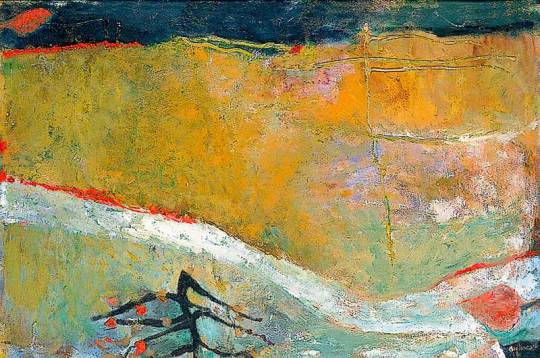
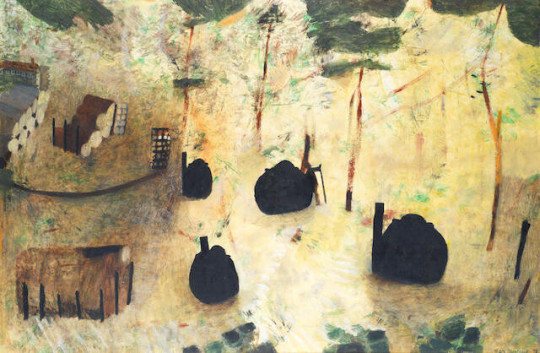
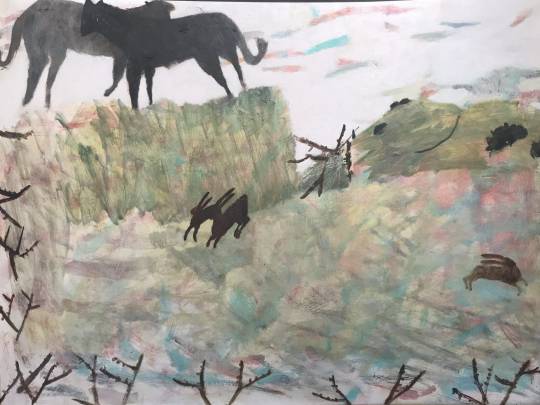
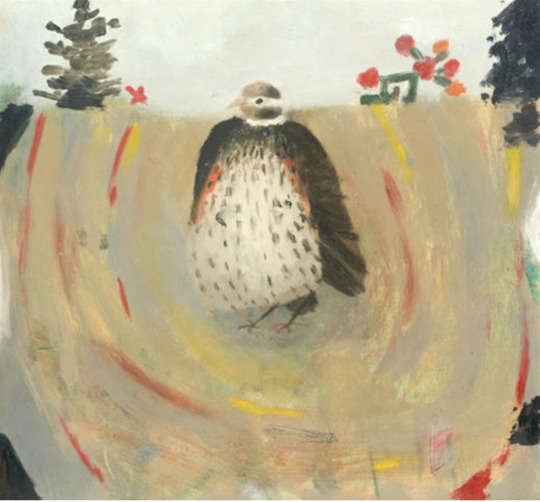
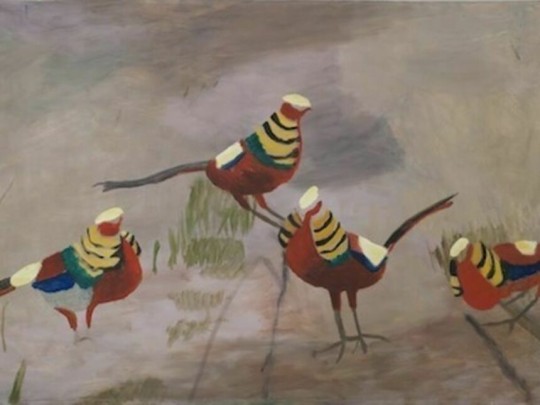



Mary Newcomb (1922 - 2008) was a British artist.
She was born Mary Slatford at Harrow-on-the-Hill, but she developed a passion for the English countryside while growing up in Wiltshire. After a general sciences degree at Reading University, she taught maths and science at Bath high school. Next to nature, art really was her mainspring and, in 1945, she volunteered as a student helper in the Flatford Mill Field Studies Centre being set up by bird painter Eric Ennion on the Suffolk-Essex border. Lodging in Willy Lott's Cottage, overlooking a favourite scene of Constable, she learned the art of observation and of taking copious notes and sketches to keep an image fresh in the mind's eye.
On a trip organised by Ennion to boost bittern-friendly reedbeds at Walberswick, she met trainee farmer Godfrey Newcomb, who had been raised in India. After their marriage they lived on small farms in the Waveney valley where a fledgling painter would find everything she needed for her art.
But her first creative venture was in clay, having earlier taken evening classes at Corsham Court, the Wiltshire arts school and bucolic idyll run by Clifford and Rosemary Ellis. She and Godfrey then turned out decorative slipware which harked back to medieval pots and was popular with a new wave of craft shops.
Within a few years Godfrey was running the farm and pottery, as Mary finally found her vocation in painting while also raising daughters Hannah and Tessa (the latter now a distinguished artist in her own right).
https://www.theguardian.com/culture/2008/mar/31/2
26 notes
·
View notes
Photo

Probably the most famous cottage in the world, 1890
Willy Lott's Cottage was immortalised by John Constable in several paintings , notably 'The Hay Wain'. The painting was originally titled Landscape: Noon, and was completed in 1821. It depicts a rural scene on the River Stour between the English counties of Suffolk and Essex, and hangs in the National Gallery in London. The work is regarded as "Constable's most famous image" and one of the greatest and most popular English paintings.
The cottage takes its name from its resident at the time John Constable did his paintings; at that time, the house was known as Gibeons Farm. William Lott (1761 - 1849), a tenant farmer, resided at Gibeons Farm and spent only four nights away from this house in the whole of his life. The earliest part of the building is sixteenth century. It was restored in the 1920s after a revival of interest in Constable's paintings. The cottage is located on the bank of the River Stour, just downstream from Flatford Mill in the heart of Dedham Vale, a typically English rural landscape.
In this photograph it's place is further cemented into hstory by the The Ipswich and District Photographic Society, who set-up this group picture in 1890, just 53 years after the death of John Constable, who died on the night of 31st March 1837, and was buried in the graveyard of St John-at-Hampstead Church in Hampstead in London.
In a couple of years time John Constable's idyllic view of the English countryside will have it's bicentennial celebration, and tourists will gather at this iconic building in Suffolk, lovingly restored, and looked after by the National Trust.
This is my colourised version of the sepia toned picture taken in 1890
Restoring Your Past … Website
Restoring Your Past … on Facebook
#photographic society#willy lott's cottage#john constable#the hay wain#flatford mill#east bergholt#dedham vale#suffolk#history#colourised#colorized#photo colourisation#photo colorization
0 notes
Photo

Willie Lott’s cottage reflected at Flatford. Photo by Justin Minns
526 notes
·
View notes
Text

Willy Lott's Cottage. Oil on canvas board
Original and prints for sale www.mrsctlandscapes.com
3 notes
·
View notes
Video
Footprints by Lee Acaster
Via Flickr:
Willy Lott's cottage at Flatford earlier today
#17th Century#Constable#Distagont3518#East Anglia#East of England#Flatford#Great Britain#Hay Wain#John Constable#Landscape#Landscape Photography#Pond#Sony#Sony A7R#Suffolk#Willie Lott#Willie Lott's Cottage#ZE#Zeiss Distagon T* 18mm f/3.5 ZE#clay lump#countryside#green#lee acaster#norfolk#rural#sky#storm light#summer#united Kingdom#www.leeacaster.com
1 note
·
View note
Photo

In Constable Country, Essex and Suffolk, England
The name Suffolk Pink is a term given to many cottages & farmhouses throughout the rural areas of Suffolk and Essex, England.
Dedham Vale has barely changed since John Constable captured the pastoral landscape with scudding clouds in his romantic 19th-century paintings. The area straddles the Essex and Suffolk borders where you can visit Flatford Mill with Willy Lott’s House, famously featured in ‘The Hay Wain’.
#traditionalist architecture#constable country#england#essex#suffolk#cottage#suffolk pink#john constable#dedham vale#flatford mill#the hay wain#willy lott's house
0 notes
Video
Willy Lott's Cottage Suffolk NT by Adam Swaine
Via Flickr:
Flatford is a small hamlet close to East Bergholt in Suffolk. It is most famous for Flatford Mill, Willy Lott's Cottage and Bridge Cottage, immortalised in the paintings of John Constable
#suffolk#rivers#river stour#english rivers#plants#nature lovers#nature#National Trust#river#river bank#england#english#cottage#english cottage#constable#flatford Mill#britain#british#uk#uk counties#Adam Swaine#2021#walks#Trees#waterside#waterways#EAST ANGLIA#green#flora
3 notes
·
View notes
